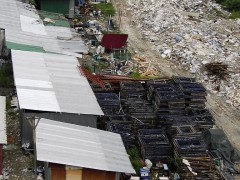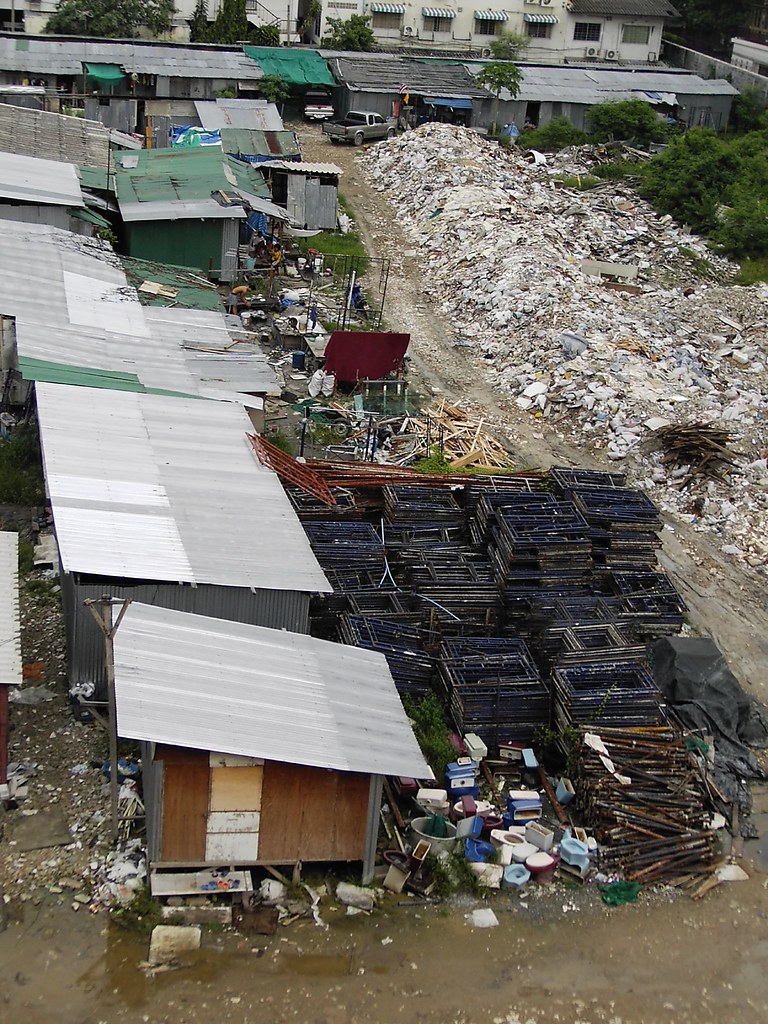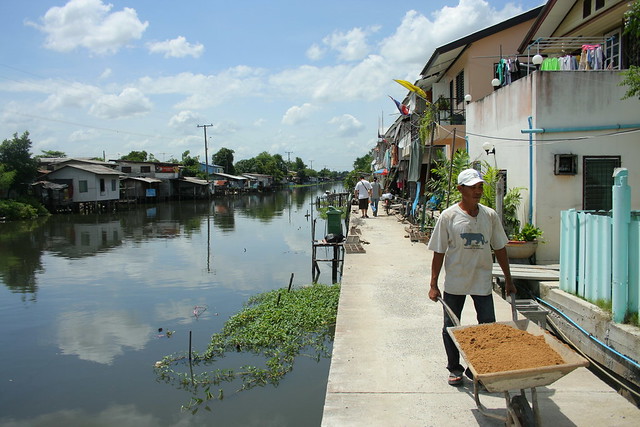Interview with Ms. Somsook Boonyabancha

This article was originally drafted by Ashley E. Pritchard and Noviscape for the newsletter “Trendnovation Southeast” as part of the Rockefeller Foundation’s Searchlight Process. For more Searchlight content on futurechallenges.org, please click here.
The following text is an excerpt from an interview with Ms. Somsook Boonyabancha, Secretary General of the Asian Coalition for Housing Rights and former Director of the Community Organizations Development Institute in Thailand.
Q: Can you briefly describe how you came across the concept of collective housing? Why is it unique, or in your experience what makes it attractive for Southeast Asia?
A: After my undergraduate work, I continued my studies in Denmark, and this is where they have quite a wide range of collective housing projects. There were different levels of collectivity that I witnessed from this society… After the study, I worked with the National Housing Authority for twelve years, and you could sort of search for how the people’s housing problem could be solved…”
Squatter community in Bangkok. (Photo by MsNina from flickr.com CC BY-NC-SA 2.0)
“From when I studied in Denmark, the collective was seen as positive–empowering people and promoting a community. Sometimes though, a collective approach may not be supported if there are too many rules and regulations, and the people who make these rules and regulations hold all the power and control. There is a need for the community–the community is like an immune system for the body, it protects individuals. For poor people, who live in the slums, once you change your status to a more secure citizen with a legal status for your housing, suddenly the market comes into the area automatically. Once you start the proper development suddenly the very formal, very powerful market comes into the area. It can start to kick the people out. Now, if the rights of the people provided to be too individual, then the poor cannot deal with it, but if poor people link together as a group, you can have a discussion about the situation and find ways to work out together.”
Q: This project [The Baan Mankong Collective Housing Project] is often referred to as a project that is for, from, and by the poor. Can you talk about the participation of the poor in this project? How did Baan Mankong improve the lives of the poor living in this community?
A: “What Baan Mankong did for the poor was show them that they could be active participants in their change and progress. Once Community A was able to negotiate with the landlord, secure rights to the land, and get the financial support and move forward with their plans, the other communities thought ‘What are they doing–we should do that, too!’ If your peer can do something, you can also do something. It stirs excitement within other communities to enable themselves to become actors and find solutions with their landlords as well. We open the possibility for the poor people to become active land acquisition actors…”
Upgrading living conditions in Bangbua, Bangkok (Photo by Cak-Cak from flickr.com CC BY-NC-ND 2.0)
Q: As this sharing and collective concept is introduced into the community in terms of collective housing, are there other aspects that become more collective for the community as well? In essence, is there a snowballing effect of collectivity – where one aspect of collectivity, communal housing, leads to other areas of collectiveness?
A: “If land is collective, we do believe and have seen other things become collective. The social development elements and cohesion will also be developed together with secure housing. For instance, most communities often initiates a welfare program, where local people will contribute money within the community to help with the management of the community as well as offer to those families in need. These community welfare programs help provide support for school fees for the children or provide scholarship funds for education, or to help the sick and elderly –whatever kinds of issues arise within the community are taken up by the welfare program.”
“Communities along canals often initiated environmental activities to raise awareness about keeping the canals clean, and organized monthly clean-ups of the canals and treatment plans. In addition, many communities supported local gardens so that food and community agriculture or vegetables could be cultivated locally.”


